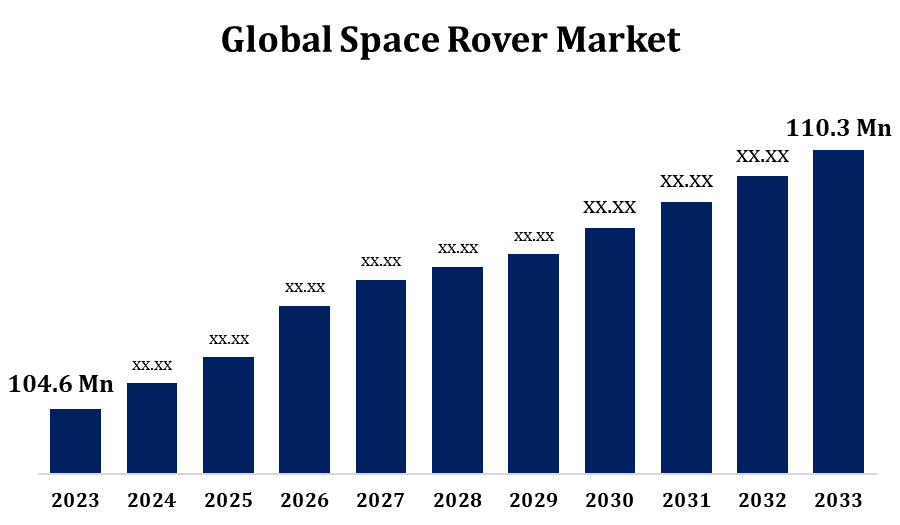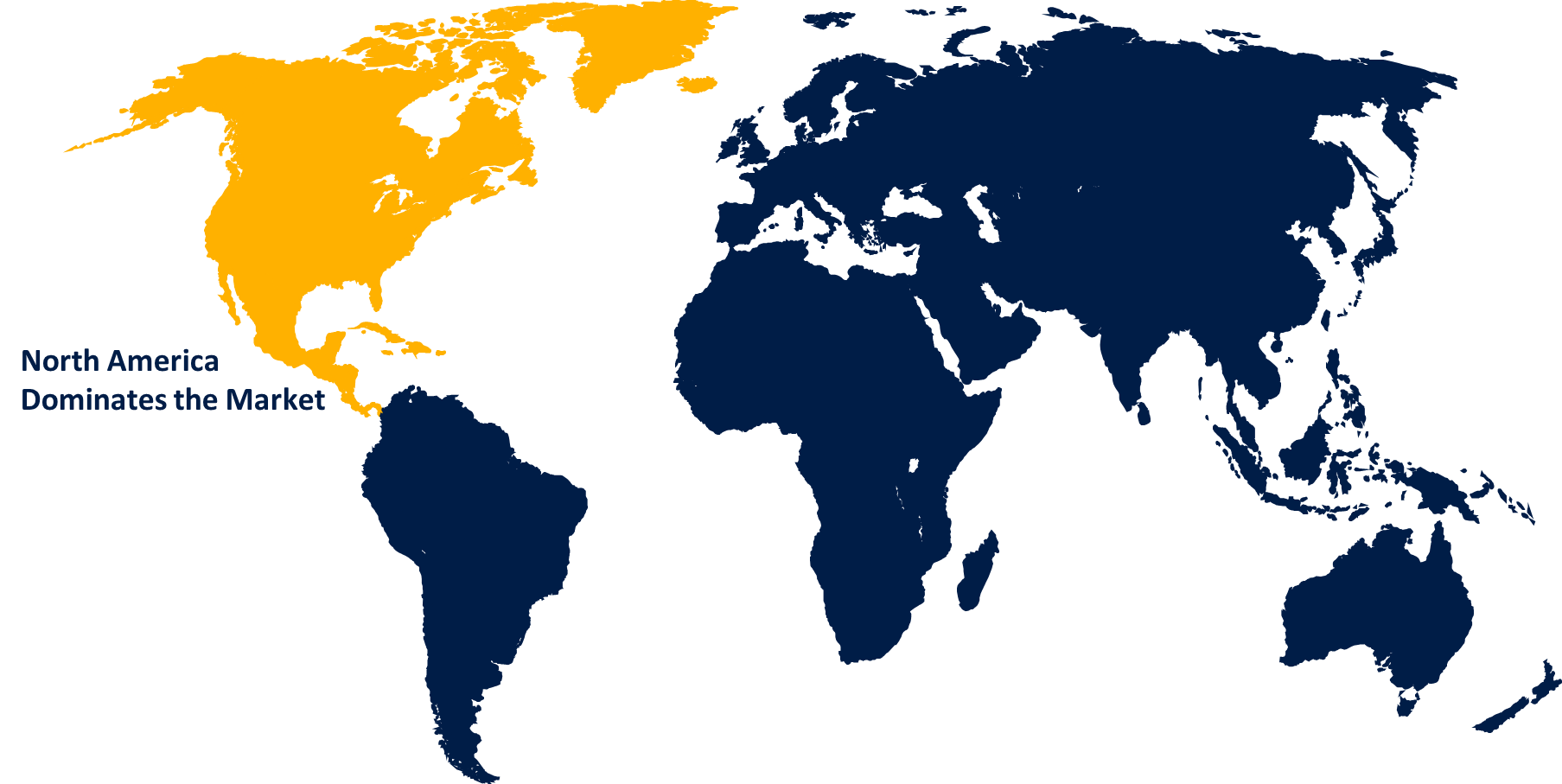Global Space Rover Market Size to Worth USD 110.3 Million by 2033 | CAGR of 0.53%
Category: Aerospace & DefenseGlobal Space Rover Market Size to Worth USD 110.3 Million by 2033
According to a research report published by Spherical Insights & Consulting, the Global Space Rover Market Size to grow from USD 104.6 Million in 2023 to USD 110.3 Million by 2033, at a Compound Annual Growth Rate (CAGR) of 0.53% during the forecast period.

Get more details on this report -
Browse key industry insights spread across 200 pages with 110 Market data tables and figures & charts from the report on the "Global Space Rover Market Size By Application (Lunar Surface, Mars Surface, and Asteroids Surface), By Solution (Hardware and Software), By Region, And Segment Forecasts, By Geographic Scope And Forecast to 2033." Get Detailed Report Description Here: https://www.sphericalinsights.com/reports/space-rover-market
The space rover market includes all aspects of designing, building, testing, and deploying robotic vehicles meant to explore alien environments. These vehicles are equipped with scientific instruments, cameras, sensors, movement systems, and communication equipment in order to thoroughly investigate the surfaces of planets. In order to understand more about the climate, geology, atmosphere, and potential habitability of other planets and moons, space rovers are employed on exploration missions to conduct experiments, collect data, and conduct scientific research. Mission objectives include, but are not limited to, analysing soil or rock samples, studying surface features, and searching for signs of past or present life. Businesses are becoming more interested in the space rover sector, in addition to government-led programmes.
Space Rover Market Value Chain Analysis
To design and prototype space rover technology, academic institutions, governmental agencies, and commercial enterprises engage in research and development, or R&D. The development of scientific equipment, autonomy, robotics, mobility systems, and other crucial space rover components are the primary objectives of research and development. Engineering teams and organisations that base their design decisions on mission requirements and research objectives specialise in space rover design. Designers combine a range of subsystems, including scientific instruments, power, communication, and mobility systems, to optimise performance and reliability. Manufacturing facilities use novel materials and creative manufacturing procedures to construct structural elements, subsystems, and components for space rovers. To guarantee space rovers' performance, functionality, and safety, testing facilities subject them to demanding qualification and testing procedures. Space rover delivery to its assigned areas is the responsibility of launch service providers using launch vehicles and spacecraft. Space rover management, operation, and deployment are the responsibility of mission operations teams during exploratory missions. Communication teams disseminate mission updates, scientific findings, and public outreach programmes to engage and educate the public about space exploration.
Space Rover Market Opportunity Analysis
As humans continue to explore the planets and moons in our solar system, space rover missions offer a plethora of alternatives. Space missions to Mars, the Moon, Europa, and other planetary bodies provide environments for scientific research, resource prospecting, and the search for signs of past or present life. As interest in lunar exploration increases, space rover missions may help both government-led and private lunar missions. Rovers can be incredibly helpful for doing research, mapping the lunar surface, and looking for resources like water ice. Private companies are developing cutting-edge rover technologies for investments in space exploration as well as commercial applications. Space rover developers have the opportunity to work with private companies on lunar resources.
Higher investment levels enable research and development programmes targeted at improving space rover technology. This includes advancements in communication capabilities, autonomy, robotics, mobility systems, and scientific instruments. Technological advancements lead to more efficient and competent space rovers, which fuel market growth. Increasing investment in space exploration often opens up new commercial opportunities in the space sector. Private companies may receive funding to develop their own space rover technologies for lunar exploration, asteroid mining, or other commercial endeavours. The diversification of this market contributes to its overall growth. Research labs, launch pads, and mission control centres are examples of space exploration infrastructure investments that enable the deployment and operation of space rovers.
Designing and building space rovers that can survive and perform in the harsh environments of other planets and moons is a very challenging task. Space rovers must be able to withstand harsh terrain, radiation, extreme temperatures, and vacuum conditions without sacrificing their dependability or performance. The development, production, testing, and mission management costs of a space rover are high. Limited financial and budgetary limits might provide challenges for research institutes, commercial organisations, and space agencies in the development and deployment of space rovers. Planetary exploration missions are inherently risky because to things like hardware malfunctions, communication issues, and launch failures.
Insights by Application
The mars surface segment accounted for the largest market share over the forecast period 2023 to 2033. Building more sophisticated and potent Mars rovers has been made feasible by advancements in autonomy, robotics, and scientific instruments. Modern Mars rovers are equipped with a wide range of instruments, such as cameras, drill systems, and spectrometers, which allow for a detailed study of the Martian landscape. The growing interest in Mars exploration has created financial opportunities for companies involved in robotics, scientific equipment, and space exploration. Private companies are developing rover systems, mobility platforms, and communication infrastructure, among other technologies and solutions, with the goal of exploring Mars.
Insights by Solution
The hardware segment accounted for the largest market share over the forecast period 2023 to 2033. Numerous components, including structural elements, mobility systems, power systems, communication systems, and scientific instruments, make up the hardware sector of space rovers. Improvements in robotics technology, such as tiny actuators, accurate mechanisms, and lightweight materials, contribute to the development of more powerful and efficient gear for space rovers. The commercialization of space operations and the opening up of new markets are the main factors driving the growth of the hardware segment of the space rover industry. Commercial businesses provide cutting-edge hardware solutions for a range of commercial pursuits, like as resource prospecting, space tourism, satellite servicing, and more, in order to expand the market, promote competition, and encourage innovation.
Insights by Region

Get more details on this report -
North America is anticipated to dominate the Space Rover Market from 2023 to 2033. North America is a pioneer in technical innovation, with companies and academic institutions driving advances in robotics, AI, mobility systems, and scientific instrumentation for space rovers. These advancements contribute to the construction of more potent, efficient, and versatile rovers for use in planetary exploration missions. The commercial space industry in North America, led by businesses such as SpaceX, Blue Origin, and Astrobotic, is increasingly involving itself in space exploration operations. For use in moon exploration, asteroid mining, and other commercial activities, these companies are developing their own space rover technologies. For example, SpaceX's Starship spacecraft is expected to deliver payloads, including rovers, to the Moon and Mars.
Asia Pacific is witnessing the fastest market growth between 2023 to 2033. Asia-Pacific is starting to see the emergence of commercial space firms engaged in satellite manufacture, satellite launch services, and space research. Companies such as Team Indus (India), Astrobotic (Singapore), and iSpace (China) are developing their own space rover technologies for use in lunar exploration and other missions. Commercial space firms in the Asia-Pacific region are developing their own space rover technologies for use in lunar exploration and other missions. These companies participate in international space programmes and encourage the growth of the commercial space industry.
Recent Market Developments
- In February 2022, leading European industrial collaboration Leonardo will design, construct, integrate, and test the sample transfer arm for NASA and ESA's Mars Sample Return mission.
Major players in the market
- National Aeronautics and Space Administration (NASA)
- Japan Aerospace Exploration Agency (JAXA)
- Indian Space Research Organisation (ISRO)
- Canadian Space Agency (CSA)
- UAE Space Agency
- State Space Corporation ROSCOSMOS (ROSCOSMOS)
- European Space Agency (ESA)
- China National Space Administration (CNSA)
Market Segmentation
This study forecasts revenue at global, regional, and country levels from 2023 to 2033.
Space Rover Market, Application Analysis
- Lunar Surface
- Mars Surface
- Asteroids Surface
Space Rover Market, Solution Analysis
- Hardware
- Software
Space Rover Market, Regional Analysis
- North America
- US
- Canada
- Mexico
- Europe
- Germany
- Uk
- France
- Italy
- Spain
- Russia
- Rest of Europe
- Asia Pacific
- China
- Japan
- India
- South Korea
- Australia
- Rest of Asia Pacific
- South America
- Brazil
- Argentina
- Rest of South America
- Middle East & Africa
- UAE
- Saudi Arabia
- Qatar
- South Africa
- Rest of Middle East & Africa
About the Spherical Insights & Consulting
Spherical Insights & Consulting is a market research and consulting firm which provides actionable market research study, quantitative forecasting and trends analysis provides forward-looking insight especially designed for decision makers and aids ROI.
Which is catering to different industry such as financial sectors, industrial sectors, government organizations, universities, non-profits and corporations. The company's mission is to work with businesses to achieve business objectives and maintain strategic improvements.
CONTACT US:
For More Information on Your Target Market, Please Contact Us Below:
Phone: +1 303 800 4326 (the U.S.)
Phone: +91 90289 24100 (APAC)
Email: inquiry@sphericalinsights.com, sales@sphericalinsights.com
Contact Us: https://www.sphericalinsights.com/contact-us
Need help to buy this report?